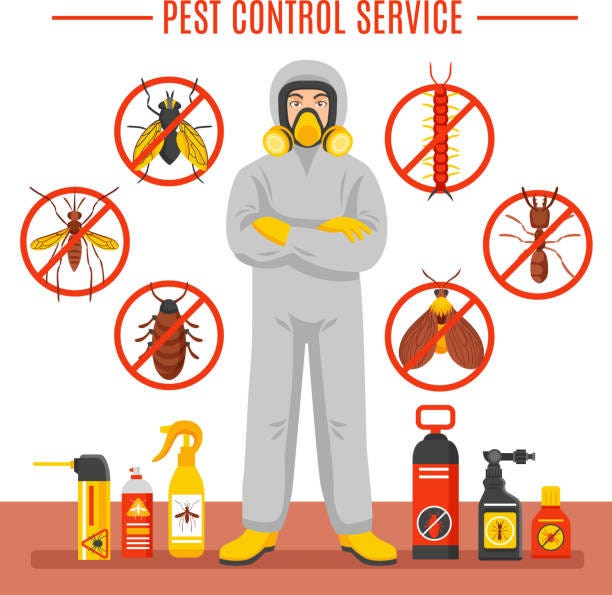Professional A1 Charlotte Bed Bug Exterminator - Top Quality Solution Ensured
Professional A1 Charlotte Bed Bug Exterminator - Top Quality Solution Ensured
Blog Article
Bed Insect Therapy Malfunction: Comparing Chemical Vs. Non-Chemical Solutions
In the world of pest control, particularly when dealing with the consistent problem of bed pests, the option between chemical and non-chemical therapy services can be a pivotal one. Both methods offer distinctive benefits and downsides, affecting factors such as performance, safety and security factors to consider, and general cost. By analyzing the nuanced information of each method, a clearer understanding of which path to pursue in addressing a bed pest invasion can be obtained.
Performance of Chemical Therapies
Chemical therapies for bed pest problems have been commonly acknowledged for their rapid and powerful efficacy in getting rid of these parasites. When considering the efficiency of chemical treatments, it is critical to recognize that they can supply a fast and thorough solution to a bed bug problem.
Additionally, chemical treatments have the benefit of providing recurring impacts, meaning that they can remain to get rid of bed pests also after the initial application. This residual activity is particularly valuable in combating any possible re-infestations. Additionally, the fast activity of chemical treatments can bring alleviation to individuals dealing with severe bed pest infestations, enabling them to reclaim control of their living rooms rapidly.
Safety And Security Worry About Chemical Solutions
One critical aspect that needs cautious consideration when utilizing chemical solutions for bed insect therapy is guaranteeing the safety and security of owners and the setting. While chemical therapies can be effective in getting rid of bed insects, they may present dangers if not dealt with properly. One of the main security interest in chemical options is the possible harm they can trigger to human wellness. Direct exposure to certain chemicals made use of in bed bug therapies can lead to respiratory issues, skin inflammation, or various other negative responses, particularly in individuals with pre-existing conditions or sensitivities. Additionally, incorrect application or dose of chemical pesticides can cause toxic residues sticking around in the cured location, posing lasting health threats to owners.
In addition, the environmental influence of chemical solutions is an additional significant factor to consider. Some chemicals made use of in bed insect treatments may be unsafe to valuable pests, wild animals, and environments if they leach right into the soil or water supply. It is vital to use chemical therapies carefully, following safety guidelines, and thinking about much less hazardous alternatives to minimize these risks and guarantee the safe and reliable management of bed bug infestations.
Advantages of Non-Chemical Techniques
Taking into consideration the potential safety problems and ecological effect related to chemical solutions for bed pest therapy, discovering non-chemical methods offers a promising option with numerous unique advantages. Non-chemical approaches use a safer alternative for families, specifically those with family pets, kids, or people conscious harsh chemicals. These methods remove the risks of direct exposure to hazardous materials, reducing the capacity for unfavorable health results. In addition, non-chemical therapies are eco-friendly, as they do not add to air or water contamination, making them a sustainable selection for insect control.
Additionally, non-chemical solutions can be efficient in targeting bed insects, including hard-to-reach areas where chemical therapies might not penetrate - A1 bed bug exterminator charlotte. Methods such as warm treatment, vacuuming, vapor cleansing, and bed mattress coverings offer detailed removal without the use of harmful chemicals.
Limitations of Non-Chemical Treatments

Furthermore, non-chemical therapies frequently need numerous applications to attain effective removal. This can be taxing and may not constantly ensure total elimination of all bed insects and their eggs, specifically in hidden or hard-to-reach areas.
Moreover, the success of non-chemical treatments greatly depends on appropriate application and thoroughness, which can be testing for individuals without expert knowledge. Insufficient application of non-chemical methods might cause incomplete eradication, bring about relentless problems and the requirement for added treatments.
As a result, while non-chemical treatments have their benefits, it is vital to recognize these limitations and consider them when determining the most reliable approach for managing bed pest invasions.
Cost Contrast: Chemical Vs. Non-Chemical Options
Offered the constraints associated with non-chemical therapies, an essential element to assess in the context of bed my link insect monitoring is the price contrast between chemical and non-chemical choices. In contrast, non-chemical therapies like heat treatment or heavy steam can be much more pricey, with expenses varying from $1,000 to $6,000 for a whole home. While the initial cost pest control definition of chemical therapies may appear lower, numerous treatments might be called for to totally remove the problem, possibly enhancing the overall expense.
Verdict

Thinking about the potential safety and security concerns and environmental effect associated with chemical options for bed pest therapy, checking out non-chemical techniques provides a promising choice with several distinctive advantages.Given the constraints linked with non-chemical therapies, an important aspect to examine in the context of bed bug administration is the cost comparison between chemical and non-chemical alternatives. In contrast, non-chemical treatments like heat therapy or steam can be much more costly, with costs varying from $1,000 to $6,000 for a whole home. While the first how much is a home pest inspection price of chemical therapies may appear lower, numerous treatments may be called for to completely remove the problem, possibly raising the general cost.In final thought, when contrasting chemical and non-chemical bed bug treatment options, it is necessary to consider effectiveness, safety, benefits, limitations, and expense.
Report this page